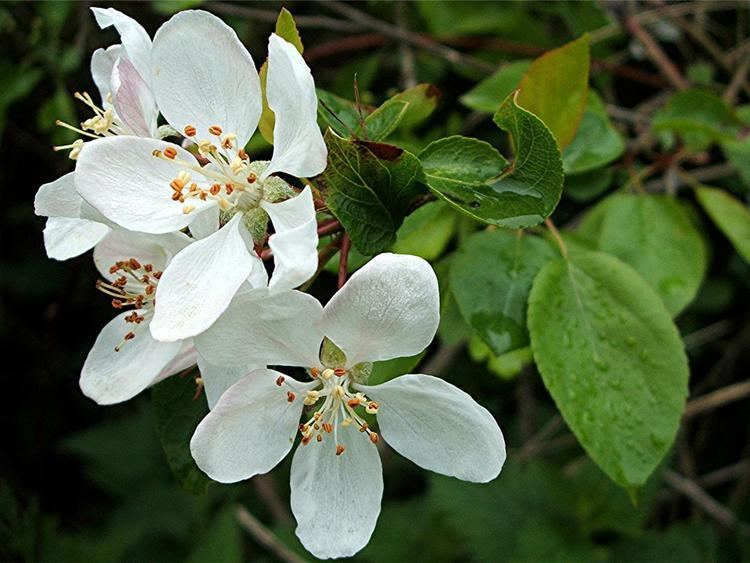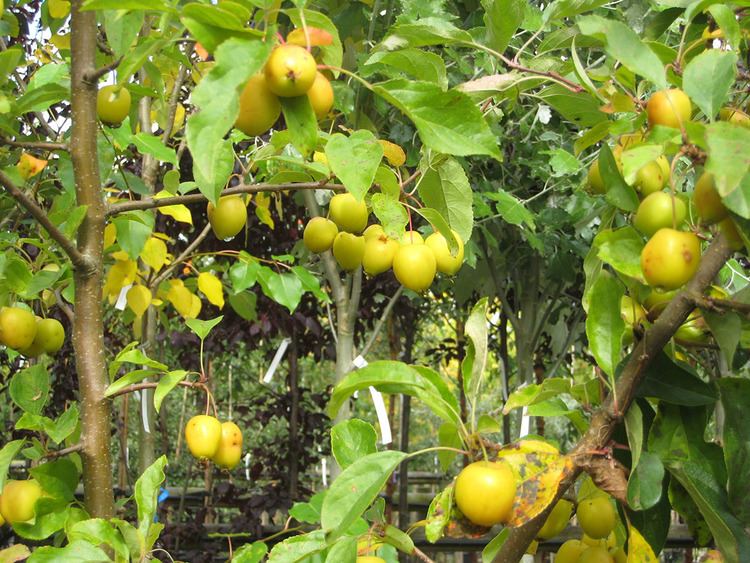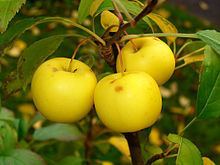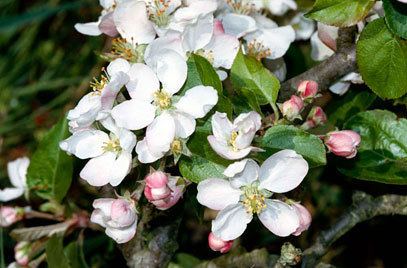Rank Species | Higher classification Apples | |
 | ||
Similar Apples, Pyrus pyraster, Malus sieversii, Field maple, Sorbus aucuparia | ||
Malus sylvestris
Malus sylvestris, the European crab apple, is a species of the genus Malus, native to Europe. Its scientific name means "forest apple" and the truly wild tree has thorns.
Contents
- Malus sylvestris
- 44 how to prune crab apple malus sylvestris bonsai trees for beginners series
- Description
- Progenitor of cultivated apples
- Pests
- References

44 how to prune crab apple malus sylvestris bonsai trees for beginners series
Description

Wild apple has an expanded crown and often appear more like a bush than a tree. It can live 80-100 years and grow up to 10 m tall with trunk diameters of 23-45 cm. Due to its weak competitiveness and high light requirement, wild apple exist mostly at the wet edge of forests, in farmland hedges or on very extreme, marginal sites. The tree is rather rare but native to most European countries. It occurs in a scattered distribution pattern as single individuals or in small groups.
Progenitor of cultivated apples

In the past M. sylvestris was thought to be the most important ancestor of the cultivated apple (M. pumila), which has since been shown to have been originally derived from the central Asian species M. sieversii. However another recent DNA analysis confirms that M. sylvestris has contributed significantly to the genome.

The study found that secondary introgression from other species of the Malus genus has greatly shaped the genome of M. pumila, with M. sylvestris being the largest secondary contributor. It also found that current populations of M. pumila are more closely related to M. sylvestris than to M. sieversii. However in more pure strains of M. pumila the M. sieversii ancestry still predominates.
The flowers are hermaphrodite and are pollinated by insects.
Pests

Its leaves are food of the caterpillars of the twin-spotted sphinx (Smerinthus jamaicensis) and possibly the hawthorn moth (Scythropia crataegella).
